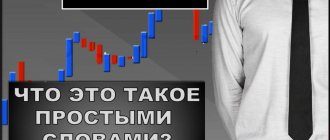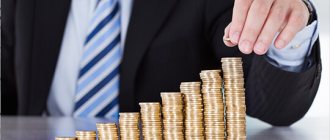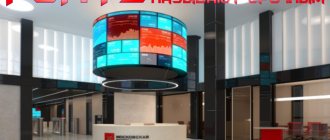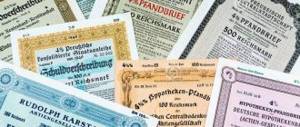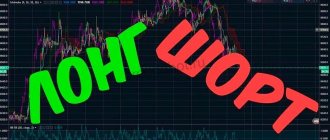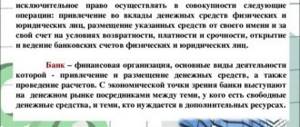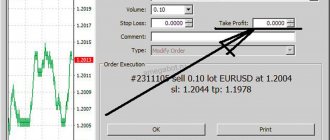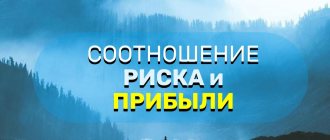There are several types of equity funds in the world, each of which operates according to its own special principles. For example, mutual funds and exchange-traded funds differ in key ways in their investment approaches. But all equity funds have one thing in common - the underlying asset is a specific class of securities, namely shares.
Why such funds are attractive and dangerous, is it worth investing in them and what risks should be taken into account - read on. From this article you will learn:
- What is an equity fund?
- How does an equity fund work?
- How to choose a suitable mutual fund?
- Types of equity funds
- Is it profitable to invest in equity funds?
What is a lot on the stock exchange and a typical mistake of a novice trader
Friends, I have come across the fact that not everyone uses basic knowledge in their trading.
Everyone immediately comes to the market to get money. It turns out that not all beginners know what a lot is on the stock exchange. I don’t remember if I had such a mistake when I just started trading stocks. But I remember that after trading for a long time on some shares, and then switching, for example, to VTB, I forgot that the number of shares in a lot here is completely different than, for example, in Sberbank. It’s good that when placing orders in the window, the number of lots is still shown. Another thing is that you can simply be inattentive.)
When placing a simple order, the number of lots is indicated (using the example of Sberbank)
And beginners in trading very often make a mistake in their very first transactions. This is especially dangerous when the account is small! They believe that they are selling or buying shares individually. But in fact, they sell or buy in lots. But these same lots include a certain number of shares.
The more lots you buy, the more you buy in the quantitative equivalent of the asset.
How to choose a suitable mutual fund?
When choosing an equity management fund, you need to look not only at the asset structure, but also at other factors, namely:
- who manages the fund - the name of the management company and the names of employees who directly carry out transactions with the fund’s property;
- infrastructure - who is the depository, registrar, auditor of the fund, how authoritative and reliable these companies are;
- minimum entry threshold;
- the currency in which major stock purchases are made;
- profitability over several time periods (at least 5 years);
- volatility coefficient;
- how the fund's return compares with the benchmark;
- amount of commission;
- conditions for exiting the investment.
It is also worth finding out how the fund handles the dividends it receives from issuers. Most mutual funds and mutual funds increase the number of shares they own through dividends, i.e. reinvest profits. ETFs, as a rule, pay dividends to investors, i.e. allow them to generate a stable cash flow.
Why combine assets into lots?
We have already partially answered this question in the first section, but let’s look at a specific example. Let's take VTB shares for analysis. Here on the screen of placing a simple order they tell us that one VTB lot is 10,000 shares.
When placing a simple order, the number of lots is indicated (using VTB as an example)
But let’s imagine that one lot = 1, and the share itself, according to quotes on the Moscow Exchange, costs 0.047770 rubles. This is approximately 4.8 kopecks. We wanted to buy a certain number of VTB shares for 1,000,000 rubles.
1,000,000/0.047770=20,933,640 shares
Can you imagine how inconvenient this is, neither for us, nor for the broker, nor for anyone!! And if you buy or sell in lots, then the figure will be without these crazy zeros.
20,933,640/1000=20,934 lots
The difference is significant: 20 million or 20 thousand. Do you feel it?
Is it profitable to invest in equity funds?
The profitability of equity funds directly depends on the composition of assets and is formed from the following sources:
- receiving dividend income - issuers pay dividends, and funds use these funds to purchase additional shares;
- capital gains due to speculative transactions - managers buy shares cheaper and sell them more expensive, extracting additional profit;
- an increase in the value of existing assets - the shares owned by the fund themselves may rise in price, and the manager’s task is to identify assets with growth potential.
As a result of these actions, the NAV of the stock fund increases. The more dynamic this growth, the more successful the company is considered. In developed markets (USA and Europe), a yield of 4-5% per annum is considered a good indicator. In developing countries, such as Russia, China, India or Brazil - from 15% per annum. If the fund consistently shows lower financial results, then the question arises about the effectiveness of the management company.
However, it should be taken into account that, in general, investing in stocks is riskier than, say, bonds. Especially if you invest in only one industry, as Russian mutual funds like to do, i.e. without sufficient diversification. Therefore, an investor needs to be prepared that his investment in the fund will melt during a bull market. At such moments, you should not panic and not dump shares or fund units, but, on the contrary, buy more, averaging the cost of your investment, in order to earn more when the NAV grows.
In general equity funds are much more volatile than bond, commodity or mixed investment funds, and their returns depend largely on the state of the economy. Such funds can bring investors a profit of tens of percent in the short term, or the profitability over several years can be slightly more than zero, so that in the end all savings will be destroyed by inflation. An investor needs to be prepared to invest in equity funds for a long term - at least 3 years.
Where can you see how much of an asset is included in a lot?
Option 1: In the asset passport on the Moscow Exchange
On the Moscow Exchange website, we go to the passport of the asset we need. In this article we look at lots using the example of blue chips. Therefore, you can find them on the main page of the Moscow Exchange website in the right widget.
In the right widget of the Moscow Exchange we look for the stock we need
And we open the passport, where we can easily find the dimensions of a standard lot of paper.
VTB share passport
For the 10 most popular papers, I have prepared a plate with data on the lot:
| paper | lot | denomination currency |
| Gazprom | 10 | rub |
| Lukoil | 1 | rub |
| Norilsk Nickel | 1 | rub |
| Sberbank (priv) | 10 | rub |
| MTS | 10 | rub |
| Rosneft | 10 | rub |
| NLMK | 10 | rub |
| Novatek | 1 | rub |
| Alrosa | 10 | rub |
| SevStal | 1 | rub |
Option 2: In the Quik terminal
In the Quik terminal you will have a current table of your assets. In this table you can add the necessary parameters for working with assets yourself. One of these important parameters is the lot.
In the current table of parameters, select “lot”
Option 3: In buy/sell orders in Quik
The simplest option. In the order book of the instrument we need, in a simple order, or in a stop order, we look at the standard lot.
We look at the lot through the glass of quotes
And we look at how many shares are included in the lot to calculate the position.
We look at the order for the amount of asset in the lot
Calculating lot size using an online calculator
Independent calculation of risks, margin and other factors is unproductive and even harmful when trading on Forex, when special accuracy and speed of calculations are required. Some resources offer an online calculator that accurately determines the optimal lot size for trading in the foreign exchange market and when trading metals.
It also works with cross rates. To make the calculation, fill in the main fields in the calculator: deposit amount, acceptable risk in percentage or in money, stop loss size (loss limit). Next, the calculator itself will do all the calculations based on the current exchange rate.
Types of lot
Full lot
A full lot is the number of units of a particular asset in one unit of account. This means that you can buy or sell at least 1 lot in a certain mode of mutual settlements between all trading parties. You can sell more according to your brokerage account, but you can’t sell less.
Less than 1 lot can be bought or sold in a different mode. In the next section we will look in more detail. Trading of shares in full lots on the Moscow Exchange takes place in the T+ mode.
Important! Trading in full lots of shares and depositary receipts for shares occurs from 10:00:00 to 18:39:59 Moscow time. Trading in lots of shares occurs from 10:00:00 to 18:44:59 Moscow time.
Incomplete lot
Trading as a private trader will occur automatically in the Quik terminal. Incomplete lots can be purchased through the special “Incomplete Lots” mode. An ordinary trader does not need this, but this mode can again be found through the parameters of the current parameter table.
We are looking for shares for purchase/sale in incomplete lots in the parameters table
From the list of shares that can be bought or sold in incomplete lots, I will choose VTB shares as an example. Please note that to the right of the name of the shares in parentheses there is an explanation “MB FR: T+: Incomplete lots”.
Having selected the necessary securities for trading from the “Incomplete Lots” mode, click on the “Yes” button to save the changes in the parameters table. And after saving the VTB paper in the parameters table, I display it in two modes:
- Trading in full lots (at the very bottom of the parameters table)
- Trading incomplete lots (a little lower in the parameters table)
Please note that the spread in the order book for the same VTB shares in the “T+” mode and in the “Incomplete Lots” mode will be different. And trading through the partial lot mode is similar to trading with a less liquid instrument.
Important! Trading in partial lots of shares occurs from 10:00:00 to 18:39:59 Moscow time. Trading in partial lots of investment units occurs from 10:00:00 to 18:44:59 Moscow time.
What is an equity fund?
An equity fund is a collective name for a whole group of funds of various types and organizational and legal forms - from mutual funds to ETFs. They have one thing in common: shares are used as the underlying asset for investment.
There are pure equity funds, the managers of which invest only in this class of securities, and mixed ones, when other assets are added to the shares - most often bonds.
Equity funds can also be classified according to the type of underlying assets:
- country - fund managers invest in shares of a specific country, for example, Russia, the USA or Germany;
- industry - shares of companies of the same profile are selected, for example, oil and gas, biotechnical, IT, etc.;
- capitalization of companies - the fund collects shares of companies of a certain size, for example, small, medium or large capitalization;
- mixed (hybrid) - such funds invest in a variety of companies united by a key principle, for example, those located in developing countries, startups, older companies, etc.
An investor needs to analyze the fund's asset composition to understand whether it is worth investing in it. For example, the asset structure may not match the investor’s risk profile, and such investments will disappoint him due to insufficiently rapid growth or, on the contrary, constant “swings” in value.
It may turn out that an investor invests money in an industry fund on the eve of a crisis in the industry - as a result, in the short term, the NAV will decrease and investors will receive a temporary loss. Or investments will be made in the country on the eve of the crisis.
